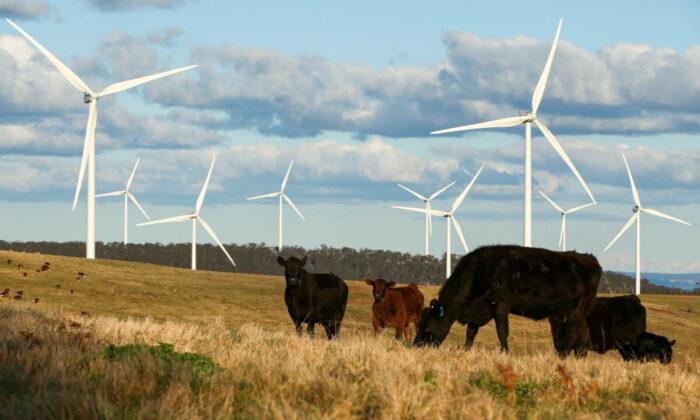Over 40 million tonnes of “blade waste” will need to be disposed of worldwide by 2050, spurring engineering and manufacturing experts to call on governments to implement “end of life” plans for the plethora of wind farms now emerging across developed countries.
Currently, wind turbines have a lifespan of around 20 to 25 years and once retired, they are disposed of in one of three ways: recycling, incineration, or dumped into landfills—the latter practice will be banned in Europe by 2025.
Dumping of wind turbine blades is prevalent because of the difficulties with recycling the materials.
Just 30 percent of the carbon fibre or glass fibre composite material used to make wind turbine blades can be reused, with most going into the cement industry as filler material.
Consumers, Businesses To Bear the Cost
The professor is pushing for “product stewardship” models to be adopted—similar to how telecommunications firms offer recycling services for smartphones—and for this to be factored into the cost of wind turbines, which will likely drive up the cost for consumers.
“Either the manufacturer must take responsibility for what needs to be done with the blades at the end of their useful life, or the wind farm operators must provide end-of-life solutions as part of the planning approval process for their business operations,” he said.
New Government Invigorates Net Zero Pursuit
The recent change in the federal government in Australia has galvanised renewable energy advocates to pursue more ambitious climate change policies.The centre-left Labor government has pledged to up the country’s emissions reduction target from 26-28 percent by 2030, to 43 percent.
State governments have also been heavily supportive of climate change initiatives rolling out policies such as state-level net-zero targets, declarations of “climate emergencies,” establishing wider electric vehicle charging networks, and restricting the development of oil and coal power generators.

Yet the pursuit of green technology and massive investments in solar panels and battery storage will bear their own cost.
In terms of lithium-ion batteries, the CSIRO estimates that Australia generates around 3,300 tonnes of battery waste per year, which could reach 100,000 tonnes by 2036. Currently, only two percent of the waste is recycled.
Further, building more solar panels, wind turbines, and batteries would also increase reliance on Chinese supply chains, where much of the raw materials or finished products are sourced.
“All polysilicon manufacturers in the Uyghur region have reported their participation in [forced] labour transfer programmes and/or are supplied by raw materials companies that have,” the study found.





